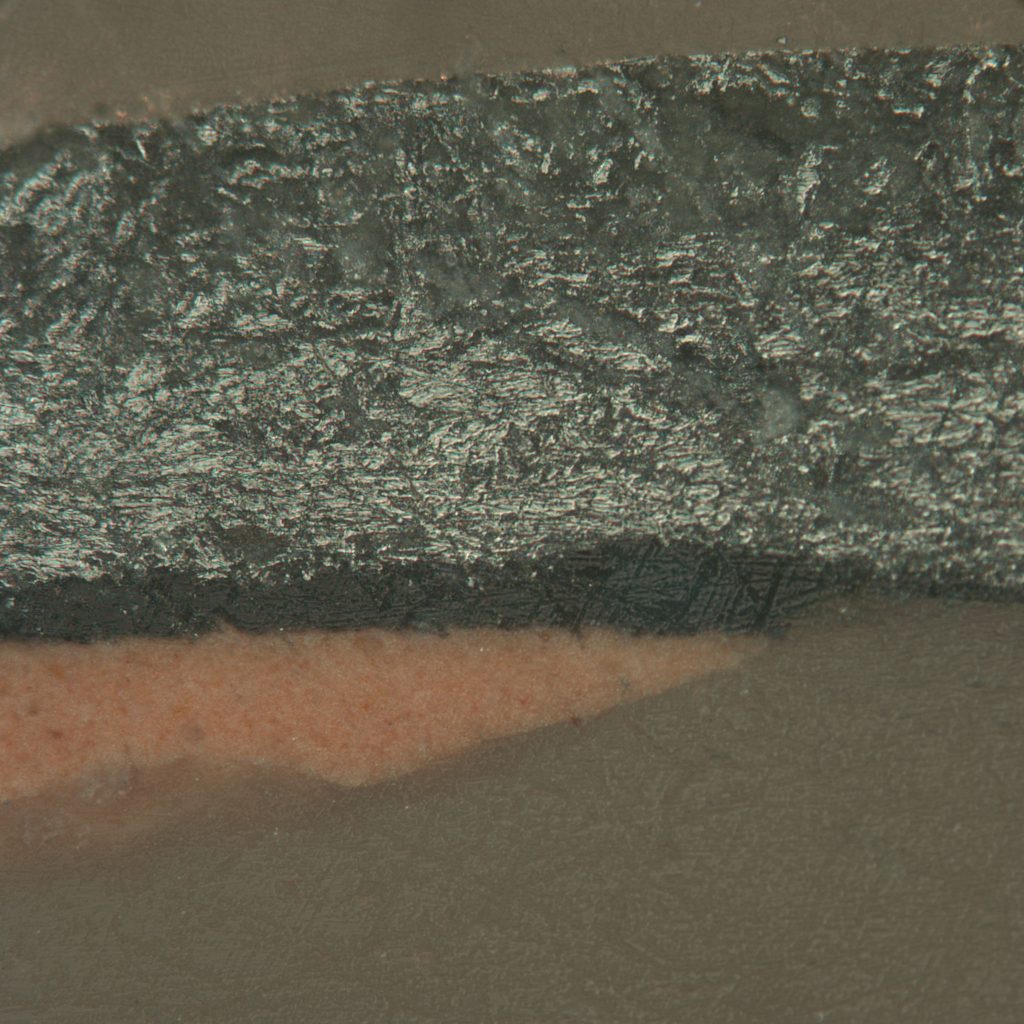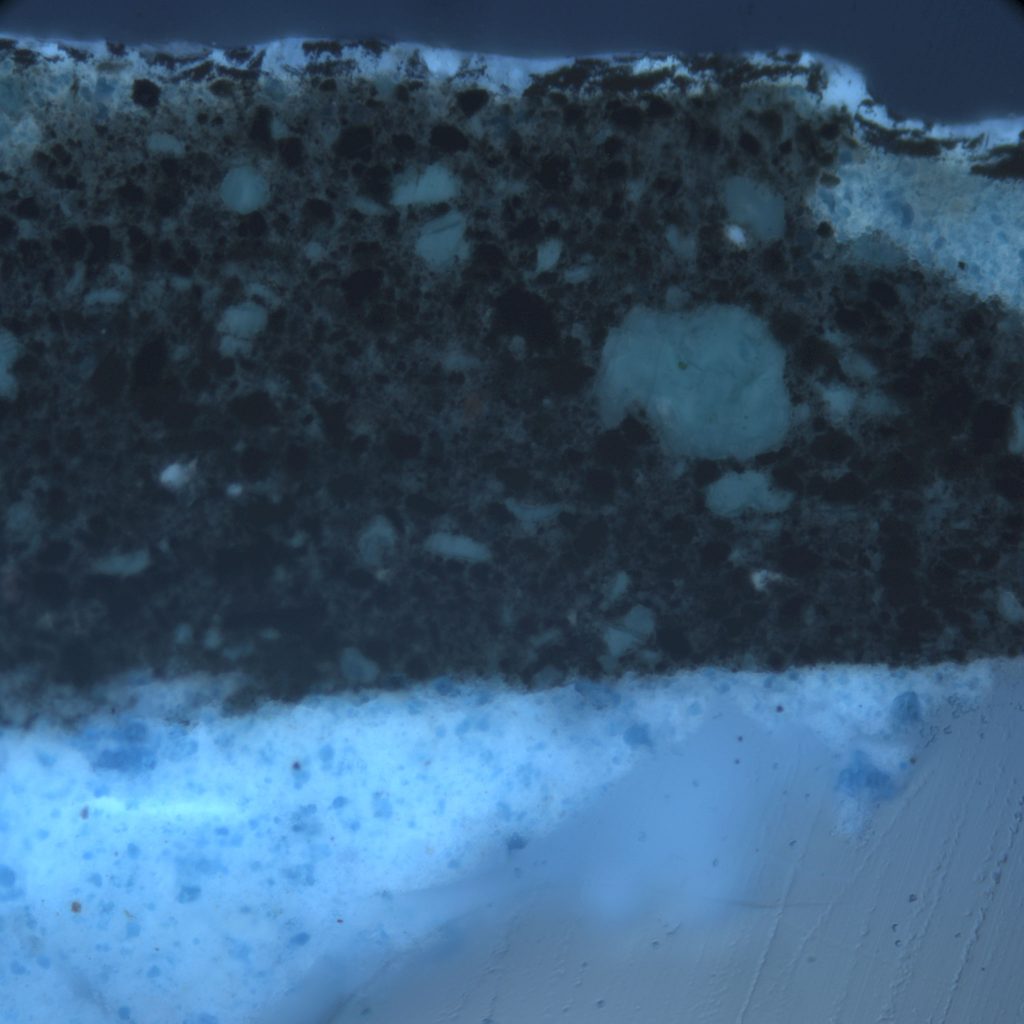Sea Change
How Pollock Painted
After close scientific examination of the painting, conservators can deduce aspects of Pollock’s process.


Sea Change paint cross-sections under normal and ultra-violet fluorescence illumination.
SAM and Getty Conservators took tiny, speck-sized samples of cross-sections of the painting to see the order and thickness of the layers of paint in Sea Change. Seen under ultraviolet fluorescence illumination, the same sample appears to lend evidence to the notion that Pollock painted these aluminum drips onto the canvas as it lay on the ground, because the heavier metal particles have settled to the bottom of that paint layer, and the binding medium fluoresces more brightly towards the top.
Though Pollock has been known to use car paints, analytical research at the Getty science labs enables conservators to know that he primarily used oil paints in Sea Change. Pollock brushed and squeezed artists’ paint directly onto the canvas in the concentrated spots, and he also used commercial paint for the aluminum and shiny black drips.

Jackson Pollock in his studio, ca. 1947 by Wilfrid Zogbaum
Here we see Pollock working on the paintings that would be included in the same show as Sea Change (which rests against the wall with its back to us at the right). Pollock spoke about liking the resistance of a hard surface as he painted and here we see how he stretched the canvas out, not on a regular stretcher, but on a flat loom as he painted on the ground.
